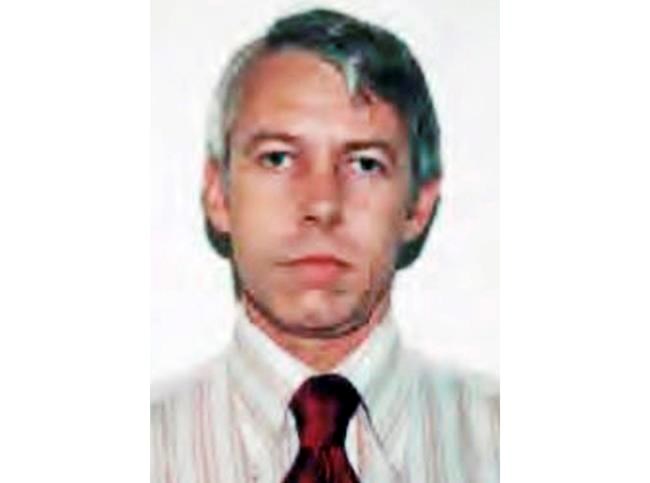COLUMBUS, Ohio — Ohio State reached an unspecified settlement with nearly half of the roughly 350 men who say they were sexually abused decades ago by a team doctor who was jokingly known among some athletes by nicknames like “Dr. Jelly Paws.”
The settlement announced Friday is the first for accusers of the late Richard Strauss, who say the doctor groped and otherwise mistreated students for two decades while school officials knew about concerns but did little to stop him.
With the settlement not yet finalized, the school and others involved are staying mum about how much would be paid.
Ohio State said in a statement that a special overseer independent of the university will help allocate the funds to individual accusers based on their experiences and the harm done. The payments will come from "existing institutional discretionary funding," not tuition or taxpayer or donor money, according to the school.
Rick Schulte, a lawyer who represented former Ohio State football players, wrestlers and other athletes, said the settlement will help the men move forward and heal.
“The bravery of our clients is humbling," Schulte said in the statement shared by the university. “We are pleased that Ohio State stepped forward and did the right thing.”
Schulte and university officials wouldn't say whether specifics of the settlement had yet been shared with the affected plaintiffs.
“Strauss’ conduct was reprehensible, and the university’s failures at the time are completely unacceptable,” Ohio State President Michael Drake said in the Friday statement. “While nothing can undo what happened here years ago, today’s university has a responsibility to support our former students and alumni, and this initial settlement is another important step in the process of restorative justice."
Mike DiSabato, the ex-wrestler whose claims in 2018 helped prompt the university to have a law firm investigate allegations about the doctor, said the settlement isn't what he hoped but “is a deal that allows us to move forward with closure.”
It remains to be seen how the deal might compare with those from other recent sexual misconduct scandals at major universities, including Michigan State’s $500 million settlement for 500-plus female victims of imprisoned sports doctor Larry Nassar.
Lawsuits by other Strauss accusers remain unresolved after months of mediation, and they have asked a judge to let them resume litigation. The most vocal among them have argued for a settlement that would mandate institutional change and be costly enough to convey that Ohio State and other schools can’t let abuse happen again.
“The other half of us that haven’t settled have experienced significant sexual abuse and significant
Lawyers for a different group of plaintiffs said in a statement that they were excluded from the negotiations that led to Friday's settlement. They called for the university to share details of the settlement so that all of the men could judge it for themselves.
Some of the accusers have said they felt their federal lawsuits against the school were their only way to seek justice and accountability now because they can't confront Strauss, who died in 2005.
As more accusers came forward or sued, the university learned of about 1,500 alleged instances of decades-old sexual misconduct by Strauss, and old records and new interviews revealed a much different portrait of him from the one implied by his unblemished employment file.
Alumni began sharing stories of being groped barehanded during mandatory medical exams or when they sought treatment for unrelated ailments like coughs or shoulder injuries, and one former athlete described being drugged and raped. Other ex-athletes recalled a voyeuristic doctor who showered in their locker rooms and was joked about as “Dr. Jelly Paws.”
In an investigation conducted for the school, a law firm concluded Strauss sexually abused young men between 1979 and 1997 in medical exams at campus athletic facilities, the student health
When the State Medical Board of Ohio eventually investigated him in 1996 after he complained about another physician, credible evidence about Strauss’ sexual misconduct was ignored and, inexplicably, no action was taken against him, according to a state panel’s review of the old investigation.
No one has publicly defended Strauss as dozens of men have recounted how the abuse has caused long-lasting harm to their health and relationships.
In lawsuits against Ohio State, they alleged the school violated the federal Title IX law that bars sex discrimination in education. The university initially argued those claims were time-barred by law.
Beyond the litigation, Ohio State and some of its former employees face more scrutiny.
The U.S. Department of Education Office for Civil Rights has said it is examining whether the school responded "promptly and equitably" to students' complaints.
And Ohio's medical board is reviewing whether there are any licensed Ohio doctors who knew or suspected Strauss' misconduct and should have reported it but didn't. If so, they could face disciplinary action, though Ohio’s window for criminally prosecuting that has passed.
The medical board also is reviewing about 2,000 closed cases of alleged sexual misconduct or impropriety by doctors over the past 25 years to determine whether any others involved evidence of criminal
Strauss' personnel records indicate he worked at five other schools before Ohio State. None of those has said any concerns were raised about him.
The claims about Strauss are strikingly similar to accusations made public recently alleging decades-old abuse by another sports doctor who worked at the University of Michigan during the same era.
___
Follow Franko on Twitter at http://www.twitter.com/kantele10. See AP's coverage of the allegations here: https://apnews.com/OhioStateTeamDoctor.
Kantele Franko, The Associated Press

